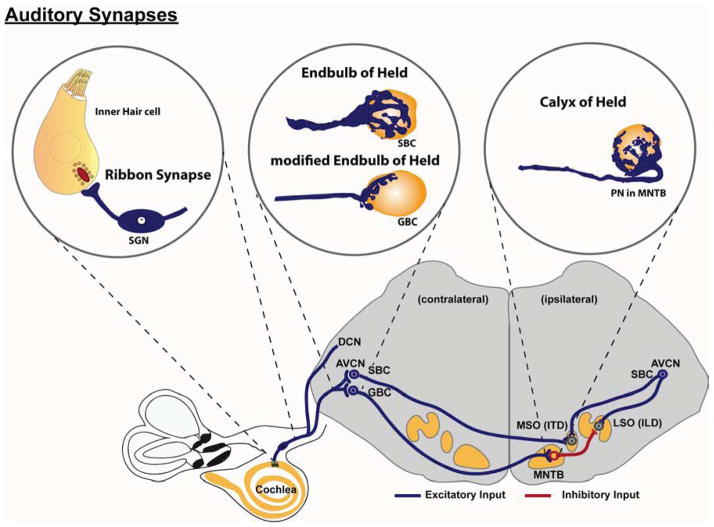Fig. 1. Overview of the synapses that are specialized for transmission of signals along the auditory pathway.
Peripheral processes of spiral ganglion neurons (SGN) receive input from inner hair cells in the cochlea via the ribbon synapse. Central projections of SGNs bifurcate upon entering the brainstem. The ascending branch extends toward the anterior ventral cochlear nucleus (AVCN) and forms an endbulb of Held synaptic contact on spherical bushy cells (SBC) or smaller, modified endbulbs of Held on globular bushy cells (GBC). SBCs send bilateral projections to terminate on neurons of the contralateral and ipsilateral medial superior olive (MSO), which forms a pathway crucial for determining interaural time differences (ITD). Axons of GBCs project contralaterally to the medial nucleus of the trapezoid body (MNTB) and elaborate the calyx of Held synapse on principal neurons. The principal neurons of the MNTB provide glycinergic inhibitory inputs to neurons in the lateral superior olive (LSO), converging with excitatory inputs from SBCs of the ipsilateral AVCN. LSO neurons use contralateral inhibition from GBCs by way of the MNTB and ipsilateral excitation from SBCs to compute interaural level (intensity) differences (ILD). Computation of ITD and ILD permits binaural sound localization.

